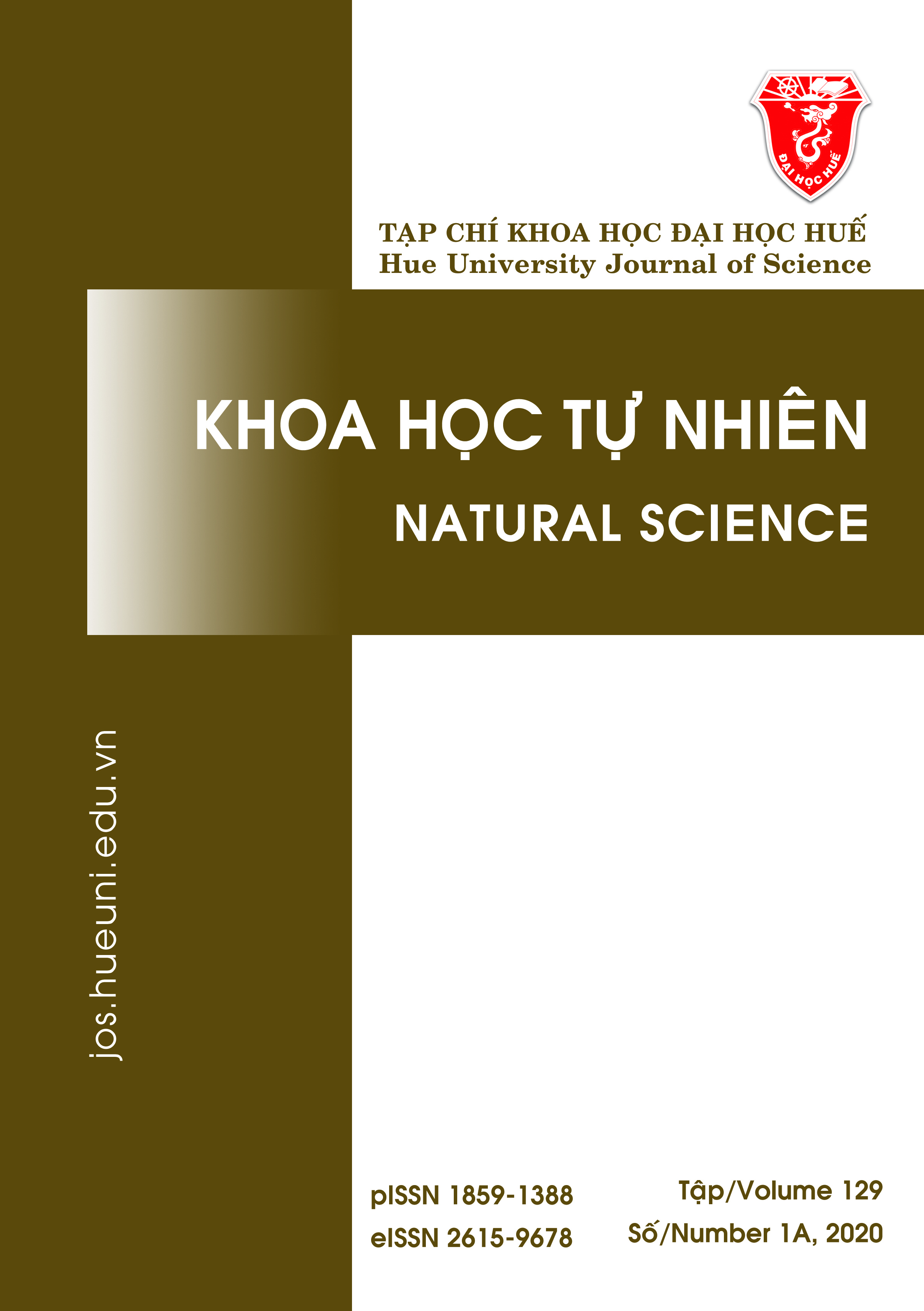Abstract
Great Mormon (Papilio memnon Linnaeus, 1758) is one of the big-sized beautiful butterflies, and in spite of possessing wide distribution, they are rare in nature. This study was carried out from January 2018 to March 2019 in Hue City and the adjacent areas. The results show that the mature butterflies are relatively large (the forewing mean is 71.65 ± 0.59 mm). Female mature butterflies are in two morphologies: non-mimetic and mimetic female. Female butterflies are less numerous than male butterflies. The newly hatched larvae have a relatively rough morphology. The first instar larvae have an initial body length of 4.05 ± 0.15 mm; later, they become more slippery. The fifth instar larvae have an average body length of 54.90 ± 2.11 mm. The pupae have an average length of 39.27 ± 0.61 mm, pointed vertex, and parallel outer. The narrow top is divided into two horn-like structures by a spear-shaped space. Great Mormon larvae eat six plant species belonging to the Rutaceae family, namely Citrus au-rantifolia, C. grandis, C. sinensis, Clausena excavata, Zanthoxylum nitidum, and Atalantia buxifolia. Under the semi-natural culture conditions with the temperature of 27–40 °C (average 37.32 ± 0.27 °C) and relative humidity 70–98% (average 88.69 ± 0.48%), the caterpillars were fed on fresh pomelo leaves (Citrus grandis), and the mature individuals were cultured with several flowers including Ixora coccinea, Lantanacamara, and 50% diluted honey. The life cycle of the butterflies (from egg to mature butterfly) is 33–56 days (average of 49.8 ± 4.2 days).
References
- James DG. What is a caterpillar: The book of Caterpillars: a life-size guide to six hundred species from around the world. The University of Chicago Press. 2017;10-14.
- Graça M, Graça C, Nunes-Gutjahr A. Immature stages of Heraclides thoas thoas (Linnaeus, 1771) (Lepidoptera: Papilionidae): biology and morphol-ogy. Boletim do Museu Paraense Emílio Goeldi Ciências Naturais. 2014;9:519-531.
- Ni Ni W. External Morphology of Adult Citrus Butterfly, Papilio memnon (Linnaeus, 1758) and Seasonal Abundance of the Species. Myanmar; 2005. Contract No.: INIS-MM--116.
- Rajeswari N, Jeyabalan D. Studies on biology and reproduction of butterflies (family: papilionidae) in Nilgiri Hills, Southern Western Ghats, India. International Journal of Advanced Research in Biological Sciences (IJARBS). 2017;4(2):1-11.
- Komala R, Wiyati SY, Suryanda A. Larval Growth of Great Mormon Butterfly (Papilio memnon memnon) Fed with Citrus aurantifolia Leaves. Journal of Physics: Conference Series. 2018;1097:012037.

This work is licensed under a Creative Commons Attribution-ShareAlike 4.0 International License.
Copyright (c) 2020 Array




